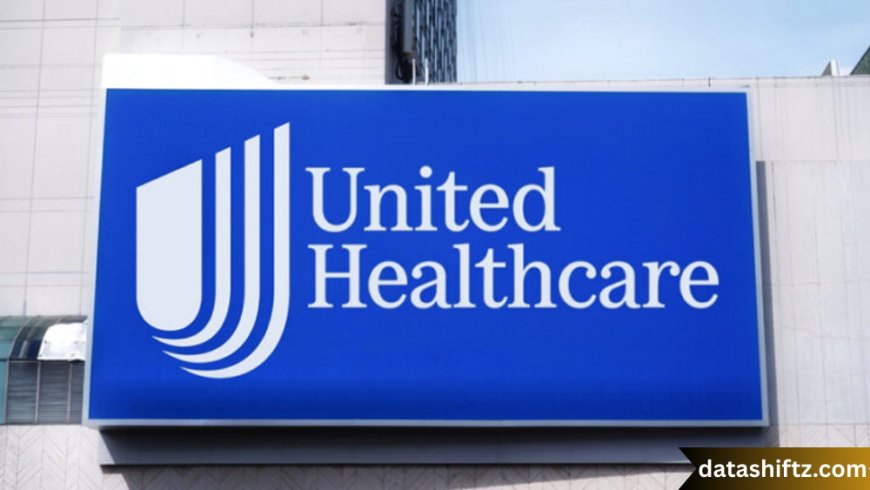UNH Stock: A Comprehensive Analysis of UnitedHealth Group's Market Performance and Outlook

Introduction
UnitedHealth Group Incorporated (NYSE: UNH) stands as a titan in the healthcare industry, representing a powerhouse in managed healthcare and insurance services. As one of the largest healthcare companies globally, UNH’s stock has attracted the attention of investors seeking stable growth, steady dividends, and exposure to the ever-expanding healthcare sector. This article delves into the fundamentals behind UNH stock, examining its historical performance, financial health, strategic initiatives, and future growth prospects. Whether you are a seasoned investor or a newcomer curious about healthcare stocks, this analysis will provide valuable insights into UnitedHealth Group’s position in today’s market.
Overview of UnitedHealth Group and Its Business Model
Company Background
Founded in 1977 and headquartered in Minnetonka, Minnesota, UnitedHealth Group has grown into a diversified healthcare company serving millions of members through two main business platforms:
-
UnitedHealthcare: The insurance division offering health benefit plans and services.
-
Optum: A technology-enabled health services platform that integrates care delivery and data analytics.
The company’s dual-platform model provides both traditional insurance services and innovative healthcare solutions, positioning UNH as a comprehensive provider in the healthcare ecosystem.
Key Business Segments
| Segment | Description | Revenue Contribution (2023) |
|---|---|---|
| UnitedHealthcare | Provides medical benefits, individual and employer health plans, Medicare and Medicaid services | 65% |
| OptumHealth | Delivers care services including primary care, behavioral health, and ambulatory services | 20% |
| OptumInsight | Offers data, analytics, research, and consulting services to healthcare organizations | 10% |
| OptumRx | Pharmacy care services including prescription drug plans and management | 5% |
UnitedHealth’s integrated approach enables it to streamline patient care, reduce costs, and improve outcomes — factors that contribute to its strong financial performance and stock market appeal.
UNH Stock Historical Performance and Financial Analysis
Stock Performance Overview
Over the past decade, UNH stock has demonstrated remarkable resilience and consistent growth. From 2013 to 2023, the stock price increased more than fivefold, driven by robust earnings growth and market confidence in healthcare demand.
-
Average annual return: Approximately 15-18%
-
Dividend yield: Consistent payouts averaging around 1.3-1.5%
-
Market capitalization: Over $500 billion, making it one of the largest publicly traded healthcare companies
Key Financial Metrics (2023)
| Metric | Value | Industry Average |
|---|---|---|
| Revenue | $400 billion | N/A |
| Net Income | $25 billion | N/A |
| Earnings Per Share (EPS) | $20.50 | $12.00 |
| Price-to-Earnings (P/E) | 25 | 20-30 |
| Debt-to-Equity Ratio | 0.65 | 0.70 |
| Return on Equity (ROE) | 24% | 18% |
These figures highlight UnitedHealth’s strong profitability, efficient capital management, and favorable valuation compared to industry peers.
Growth Drivers, Risks, and Future Outlook
Growth Catalysts
Several factors support the bullish outlook on UNH stock:
-
Aging Population and Healthcare Demand: With an aging demographic in the U.S. and globally, demand for healthcare services and insurance is expected to rise.
-
Medicare Advantage Expansion: UnitedHealthcare’s Medicare Advantage plans are growing rapidly, benefiting from favorable regulatory changes and increasing enrollments.
-
Innovation in Health Tech: Optum’s investments in data analytics, AI, and telehealth position the company at the forefront of healthcare innovation.
-
Cost Efficiency Initiatives: Integrated care models and value-based care contracts help reduce costs and improve margins.
-
Global Expansion: Strategic acquisitions and partnerships aim to expand UnitedHealth’s footprint beyond the U.S. market.
Potential Risks
Despite its strengths, investors should be aware of several risks:
-
Regulatory Uncertainty: Changes in healthcare policies and reimbursement rates can impact revenues.
-
Competition: Increasing competition from both traditional insurers and tech-driven healthcare startups.
-
Economic Downturn: A recession could reduce employer-sponsored insurance uptake.
-
Litigation and Compliance: Legal challenges and regulatory scrutiny remain ongoing concerns.
UNH Stock Performance vs. Competitors (Past 5 Years)
| Company | Stock Price Growth (5Y) | Dividend Yield | Market Cap (2024) |
|---|---|---|---|
| UnitedHealth Group (UNH) | 90% | 1.4% | $550 billion |
| CVS Health (CVS) | 40% | 2.1% | $130 billion |
| Anthem Inc. (ANTM) | 65% | 1.3% | $120 billion |
| Cigna Corporation (CI) | 70% | 1.0% | $80 billion |
7 Reasons to Consider Investing in UNH Stock
-
Market Leadership: Largest U.S. health insurer with diversified revenue streams.
-
Strong Financials: Consistent revenue growth, solid profitability, and healthy cash flows.
-
Innovative Edge: Pioneering use of technology to transform healthcare delivery.
-
Demographic Tailwinds: Positioned to benefit from an aging population and rising healthcare needs.
-
Robust Dividend Policy: Regular dividends with a track record of increases.
-
Strategic Acquisitions: Growth through targeted acquisitions and global expansion.
-
Resilience: Proven ability to navigate regulatory and economic challenges.
Conclusion
UnitedHealth Group (UNH) remains a compelling stock in the healthcare sector due to its diversified business model, consistent financial performance, and forward-looking innovation. While risks exist, the company’s leadership in both insurance and health services, coupled with favorable industry trends, offers promising growth potential for investors. For those seeking exposure to healthcare with a blend of stability and innovation, UNH stock stands out as a solid contender. As healthcare continues to evolve, UnitedHealth’s commitment to integrated care and technology-driven solutions will likely maintain its position at the forefront of the market.





























